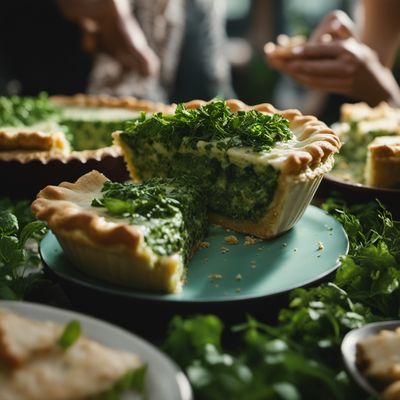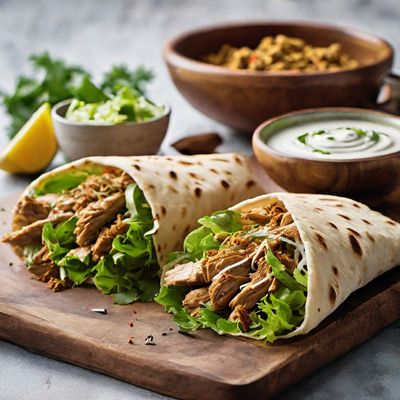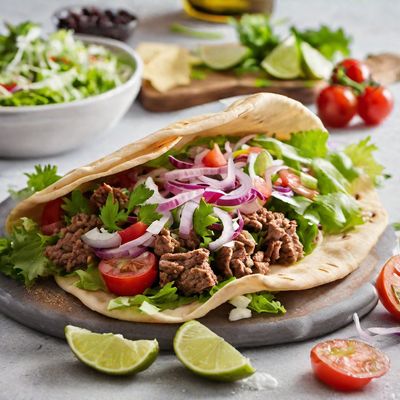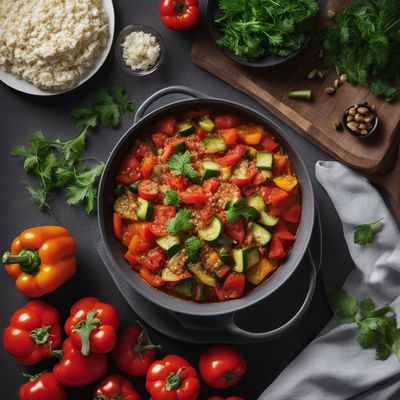
Recipe
Korean-style Beef Bulgogi Gyros
Bulgogi Fusion: A Korean Twist on Greek Gyros
4.9 out of 5
In Korean cuisine, the flavors of marinated and grilled meats are highly celebrated. This recipe takes inspiration from the traditional Greek gyros and infuses it with the bold and savory flavors of Korean bulgogi. The result is a mouthwatering fusion dish that combines the best of both worlds.
Metadata
Preparation time
15 minutes
Cooking time
10 minutes
Total time
25 minutes
Yields
4 servings
Preparation difficulty
Easy
Suitable for
Gluten-free, Dairy-free, Nut-free, Low-carb, High-protein
Allergens
Soy
Not suitable for
Vegan, Vegetarian, Paleo, Keto, Halal
Ingredients
While the original Greek gyros typically use lamb or pork, this Korean adaptation replaces the meat with thinly sliced beef marinated in a sweet and savory bulgogi sauce. The traditional tzatziki sauce is substituted with a spicy gochujang mayo, adding a kick of heat to the dish. The gyros are also served with kimchi and pickled vegetables for a Korean twist. We alse have the original recipe for Gyros, so you can check it out.
-
500g (1.1 lb) beef sirloin, thinly sliced 500g (1.1 lb) beef sirloin, thinly sliced
-
4 tablespoons soy sauce 4 tablespoons soy sauce
-
2 tablespoons brown sugar 2 tablespoons brown sugar
-
2 tablespoons sesame oil 2 tablespoons sesame oil
-
2 tablespoons minced garlic 2 tablespoons minced garlic
-
1 tablespoon grated ginger 1 tablespoon grated ginger
-
1 tablespoon gochujang (Korean chili paste) 1 tablespoon gochujang (Korean chili paste)
-
1 tablespoon rice vinegar 1 tablespoon rice vinegar
-
1 tablespoon vegetable oil 1 tablespoon vegetable oil
-
4 pita breads 4 pita breads
-
1 cup shredded lettuce 1 cup shredded lettuce
-
1 cup sliced cucumber 1 cup sliced cucumber
-
1 cup kimchi 1 cup kimchi
-
Pickled vegetables (carrots, radishes, etc.) for serving Pickled vegetables (carrots, radishes, etc.) for serving
Nutrition
- Calories (kcal / KJ): 400 kcal / 1674 KJ
- Fat (total, saturated): 15g, 4g
- Carbohydrates (total, sugars): 30g, 6g
- Protein: 35g
- Fiber: 3g
- Salt: 2g
Preparation
-
1.In a bowl, combine soy sauce, brown sugar, sesame oil, minced garlic, grated ginger, gochujang, and rice vinegar to make the bulgogi marinade.
-
2.Add the thinly sliced beef to the marinade and mix well. Let it marinate for at least 1 hour, or overnight for best results.
-
3.Heat vegetable oil in a skillet over medium-high heat. Cook the marinated beef until browned and cooked through, about 5-7 minutes.
-
4.Warm the pita breads in a toaster or oven.
-
5.Spread a generous amount of gochujang mayo on each pita bread.
-
6.Place a handful of shredded lettuce, sliced cucumber, and a spoonful of kimchi on each pita bread.
-
7.Add the cooked bulgogi beef on top of the vegetables.
-
8.Roll up the pita bread tightly, securing it with foil or parchment paper.
-
9.Serve the Korean-style beef bulgogi gyros with pickled vegetables on the side.
Treat your ingredients with care...
- Beef — For the best results, choose a tender cut of beef like sirloin and slice it thinly against the grain for a more tender texture.
- Gochujang — Adjust the amount of gochujang according to your spice preference. Add more for extra heat or reduce for a milder flavor.
- Kimchi — If you prefer a less spicy gyros, you can use mild kimchi or reduce the amount used.
Tips & Tricks
- To make the beef even more tender, you can add a tablespoon of grated pear or kiwi to the marinade. The enzymes in these fruits help to break down the meat fibers.
- If you don't have pita bread, you can use tortillas or lettuce wraps as a substitute.
- Feel free to customize your gyros by adding other toppings such as sliced onions, bell peppers, or fresh herbs like cilantro or mint.
- If you prefer a vegetarian version, you can substitute the beef with tofu or tempeh marinated in the bulgogi sauce.
Serving advice
Serve the Korean-style beef bulgogi gyros hot, either as a main dish or as a delicious street food-style snack. They are perfect for casual gatherings or as a quick and satisfying meal.
Presentation advice
To enhance the presentation, you can garnish the gyros with a sprinkle of sesame seeds and a drizzle of extra gochujang mayo. Serve them on a platter with a side of pickled vegetables for a colorful and appetizing display.
More recipes...
For Gyros » Browse all
For Greek cuisine » Browse all
More Greek cuisine dishes » Browse all

Patsas
Tripe soup
Patsas is a traditional Greek soup made from beef tripe, vegetables, and herbs. It is a hearty and flavorful dish that is often enjoyed as a...

Saganaki
Fried cheese
Saganaki is a delicious Greek appetizer that is made with fried cheese. It is a popular dish in Greek restaurants and is often served with pita...

Tsigaridia
Wild Greens Pie
Tsigaridia is a traditional Greek dish made with fried zucchini flowers. It is typically served as a side dish or meze.
More Korean cuisine dishes » Browse all

Hongeo
Fermented Skate
Hongeo is a traditional Korean dish that is made with fermented skate. It is a pungent and flavorful dish that is often served as a delicacy.

Gopchang jeongol
Gopchang Hot Pot
Gopchang jeongol is a Korean dish that is made with beef tripe and vegetables. The dish is spicy, flavorful, and perfect for sharing with friends...

Yeot
Yeot is a traditional Korean candy that is sweet, chewy, and made with rice.











